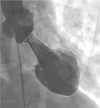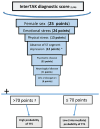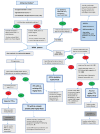Takotsubo Syndrome: An International Expert Consensus Report on Practical Challenges and Specific Conditions (Part-1: Diagnostic and Therapeutic Challenges)
- PMID: 39417524
- PMCID: PMC11589216
- DOI: 10.4274/balkanmedj.galenos.2024.2024-9-98
Takotsubo Syndrome: An International Expert Consensus Report on Practical Challenges and Specific Conditions (Part-1: Diagnostic and Therapeutic Challenges)
Abstract
In the recent years, there has been a burgeoning interest in Takotsubo syndrome (TTS), which is renowned as a specific form of reversible myocardial dysfunction. Despite the extensive literature available on TTS, clinicians still face several practical challenges associated with the diagnosis and management of this phenomenon. This potentially results in the underdiagnosis and improper management of TTS in clinical practice. The present paper, the first part (part-1) of the consensus report, aims to cover diagnostic and therapeutic challenges associated with TTS along with certain recommendations to combat these challenges.
Conflict of interest statement
Conflict of Interest: The authors declare that they have no conflict of interest.
Figures







Dataset described in
-
Takotsubo Syndrome: An International Expert Consensus Report on Practical Challenges and Specific Conditions (Part-2: Specific Entities, Risk Stratification and Challenges After Recovery).Balkan Med J. 2024 Oct 31;41(6):442-457. doi: 10.4274/balkanmedj.galenos.2024.2024-9-99. Epub 2024 Oct 17. Balkan Med J. 2024. PMID: 39417538 Free PMC article.
References
-
- Sato H, Tateishi H, Uchida T. Takotsubo-type cardiomyopathy due to multivessel spasm. In: Kodama K, Haze K, Hon M, et al. (editors). Clinical Aspect of Myocardial Injury: From Ischemia to Heart Failure, Kagakuhyouronsha, Tokyo, 1990. pp. 56-64.
-
- Lyon AR, Citro R, Schneider B. Pathophysiology of Takotsubo Syndrome: JACC State-of-the-Art Review. J Am Coll Cardiol. 2021;77:902–921. - PubMed
-
- Omerovic E, Citro R, Bossone E. Pathophysiology of Takotsubo syndrome - a joint scientific statement from the Heart Failure Association Takotsubo Syndrome Study Group and Myocardial Function Working Group of the European Society of Cardiology - Part 1: overview and the central role for catecholamines and sympathetic nervous system. Eur J HeartFail. 2022;24:257–273. - PubMed
-
- Omerovic E, Citro R, Bossone E. Pathophysiology of Takotsubo syndrome - a joint scientific statement from the Heart Failure Association Takotsubo Syndrome Study Group and Myocardial Function Working Group of the European Society of Cardiology - Part 2: vascular pathophysiology, gender and sex hormones, genetics, chronic cardiovascular problems and clinical implications. Eur J Heart Fail. 2022;24(2):274–286. doi: 10.1002/ejhf.2368. - DOI - PubMed
MeSH terms
LinkOut - more resources
Full Text Sources
